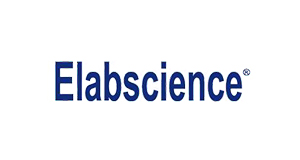Recombinant Human EGFR/ErbB1 protein (His tag)
Recombinant Human EGFR/ErbB1 protein (His tag)
SKU
ELSPDMH100085-100
Packaging Unit
100 µg
Manufacturer
Elabscience Biotechnology
Availability:
loading...
Price is loading...
Abbreviation: EGFR;ErbB1
Target Synonym: Epidermal growth factor receptor;Proto-oncogene c-ErbB-1;Receptor tyrosine-protein kinase erbB-1;EGFR;ERBB;ERBB1;HER1
Target Species: Human
Expression Host: HEK293 Cells
Fusion Tag: C-His
UNIProt ID: P00533
Background: The EGFR subfamily of receptor tyrosine kinases is composed of EGFR; ErbB2; ErbB3 and ErbB4. The EGFR shares 43% - 44% aa sequence identity with the ECD of human EGFR subfamily. All these family members are type I transmembrane glycoproteins with an extracellular ligand binding domain. The extracellular ligand binding domain is containing two cysteine-rich domains separated by a spacer region and a cytoplasmic domain containing a membrane-proximal tyrosine kinase domain. Ligand binding could induce EGFR homodimerization and heterodimerization with ErbB2; resulting in cell signaling; heterodimerization tyrosine phosphorylation and kinase activation. It can bind EGF; amphiregulin; TGF-alpha; betacellulin; epiregulin; HB-EGF; epigen; and so on. Its signaling regulates multiple biological functions including cell proliferation; differentiation; motility; and apoptosis. EGFR can also be recruited to form heterodimers with the ligand-activated ErbB3 or ErbB4. EGFR is overexpressed in different tumors. Several anti-cancer drugs use EGFR as target.
Sequence: Met1-Gly640
Purity: > 95 % as determined by reducing SDS-PAGE.
Formulation: Lyophilized from sterile PBS, pH 7.4.
Normally 5 % - 8 % trehalose, mannitol and 0.01% Tween80 are added as protectants before lyophilization.
Please refer to the specific buffer information in the printed manual.
Endotoxin: Please contact us for more information.
Target Synonym: Epidermal growth factor receptor;Proto-oncogene c-ErbB-1;Receptor tyrosine-protein kinase erbB-1;EGFR;ERBB;ERBB1;HER1
Target Species: Human
Expression Host: HEK293 Cells
Fusion Tag: C-His
UNIProt ID: P00533
Background: The EGFR subfamily of receptor tyrosine kinases is composed of EGFR; ErbB2; ErbB3 and ErbB4. The EGFR shares 43% - 44% aa sequence identity with the ECD of human EGFR subfamily. All these family members are type I transmembrane glycoproteins with an extracellular ligand binding domain. The extracellular ligand binding domain is containing two cysteine-rich domains separated by a spacer region and a cytoplasmic domain containing a membrane-proximal tyrosine kinase domain. Ligand binding could induce EGFR homodimerization and heterodimerization with ErbB2; resulting in cell signaling; heterodimerization tyrosine phosphorylation and kinase activation. It can bind EGF; amphiregulin; TGF-alpha; betacellulin; epiregulin; HB-EGF; epigen; and so on. Its signaling regulates multiple biological functions including cell proliferation; differentiation; motility; and apoptosis. EGFR can also be recruited to form heterodimers with the ligand-activated ErbB3 or ErbB4. EGFR is overexpressed in different tumors. Several anti-cancer drugs use EGFR as target.
Sequence: Met1-Gly640
Purity: > 95 % as determined by reducing SDS-PAGE.
Formulation: Lyophilized from sterile PBS, pH 7.4.
Normally 5 % - 8 % trehalose, mannitol and 0.01% Tween80 are added as protectants before lyophilization.
Please refer to the specific buffer information in the printed manual.
Endotoxin: Please contact us for more information.

 Deutsch
Deutsch










